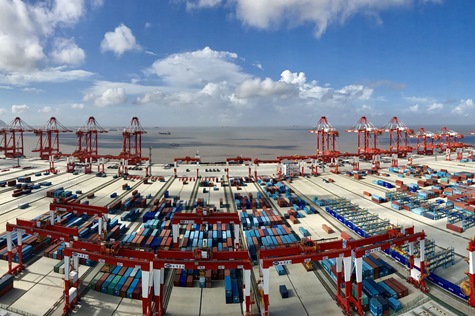The views expressed are the views of Foundation Asset Management (HK) Limited only and are subject to change based on market and other conditions. The information provided does not constitute investment advice and it should not be relied on as such. All material has been obtained from sources believed to be reliable, but its accuracy is not guaranteed. This material contains certain statements that may be deemed forward-looking statements. Please note that any such statements are not guarantees of any future performance and actual results or developments may differ materially from those projected. Investors should note that investment involves risk.
The price of units may go down as well as up and past performance is not indicative of future results. Investors should read the explanatory memorandum for details and risk factors in particular those associated with investment in emerging markets. This commentary has not been reviewed by the Securities and Futures Commission.
China’s Internal Circulation Model Forging Ahead
August 2020

Photo from Sina
China's latest manufacturing PMI index was at 51.1, an
increase of 0.2 from the previous month, which is now five
consecutive months in the expansion zone, signaling that
China's economic recovery continues. In the sub-indices,
production, new orders, main raw materials purchase price,
producer price grew, while new export orders and imports
contracted, dragging down the overall PMI. New orders index
was 51.7, which increased 0.3 from June, which represents an
expansion of 3 consecutive months. Comparatively, the
production index was at 54, 2.3 higher than the new orders
index. This indicates that while production has recovered
strongly, external demand and exports remain relatively weak.
Since China manufacturing PMI’s inception in August
2016, structural supply side and taxation reforms have
optimized and recalibrated the structure of the Chinese
economy, which coincided with 27 months of continuing
expansion for the manufacturing PMI. The structure of the
Chinese economy at present remains reasonably resilient, even
after the initial wave of COVID-19 pandemic and the resulting
contraction in economic data. By implementing strict social
distancing and rigorous testing policies, China was first in
and first out of the COVID-19 recession and was among the
earliest countries to resume production and economic
activities. Amid the global recession, relying on exports to
drive GDP remains a challenge. Therefore, policies have been
implemented by the government and PBOC to drive domestic
consumption and infrastructure investment.
Internal Economic Circulation
Faced with the
global demand shortfall and geopolitical tensions, China
promoted the idea of ‘Internal Economic Circulation’ in May
2020. With increased emphasis on self-sustainability in areas
such as production, connectivity, capital allocation and
consumption. Economic self-reliance is pursued to form a ‘Dual
Circulation’ model of growth.
Since China’s historical
reform and opening-up policy, the Chinese economy has
gradually grown more influential and embedded in the global
economic system. With rising global pushback against China,
the export-driven growth model is becoming more challenging
each passing day. Therefore, it is important for China to
leverage the strength of its huge domestic market to adapt in
these testing conditions, even though potential challenges to
the domestic-driven economic model remain.
Good in Theory, but Real-life Challenges Remain
With a population of 1.4 billion, a large labour force is an
important component for the ‘Internal Economic Circulation’
model to succeed. Efficient production and labour allocation
are the main elements that drive domestic consumption. Other
than traditional infrastructure projects, infrastructure for
the ‘New Economy’ is a new priority to drive productivity and
technological gains. Infrastructure for the ‘New Economy’
represents crucial building blocks that can enable greater use
of technology, these include 5G infrastructure, UHV power
transmission, high-speed railways, EV charging piles, data
centres, Artificial Intelligence and Industrial Internet of
Things. These projects involve industries such as
communications, industrial, transportation, digital etc.
Investments in these key strategic areas should important
drivers for economic growth under the ‘Internal Economic
Circulation’ model. In June 2020, Premier Li pointed out that
China has 600 million people living on a monthly income of
1000 yuan. China’s huge wealth inequality, as well as
expensive property prices could be a potential drag on the
domestic-driven economic model. In addition, China benefitted
from overseas transfer of technology and foreign capital since
the initial reform. Relying on an internal circulation model
would reduce the exchange and cooperation on technology
between China and other countries, which could complicate
China’s innovation and progress on new technological
development. Faced with external and internal challenges,
China’s economy continues to forge ahead. Since February 2020,
China manufacturing PMI 5-month expansion fully demonstrates
China cultural and economic advantages. We believe this new
direction of ‘Internal Economic Circulation’ is an important
policy shift, with long term benefits and challenges to
China’s economic development.
